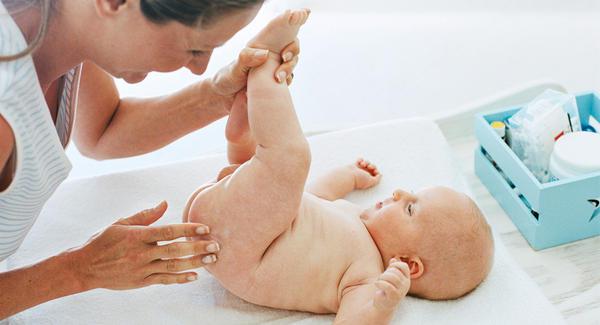It is natural to feel panicked when you see blood, and it can be even more frightening if you see it on your child’s stool. Thankfully, it is usually nothing serious to see blood when wiping baby bottom. So many things can cause rectal bleeding, but you may want to talk to your doctor if the problem persists or you notice a large amount of blood. Here is more about it.

Other Signs to Watch Out For
As mentioned already, rectal bleeding in babies does not always indicate anything serious, but you need to seek medical attention considering the color of the blood you see. For instance:
Bright Red Blood
Seeing bright red blood in the toilet bowl after completing a bowel movement usually indicates anal fissure or hemorrhoids. It is the result of a swollen vein inside the anus or a split in the lining of the anus. Constipation can be the underlying cause of both hemorrhoids and anal fissure.
However, if you see blood mixed into the bowel movement, it usually indicates an inflamed colon or rectum. It could be the result of a serious condition, especially if your baby have other symptoms, such as sharp anal pain, cramping, constipation, mucus in the stool, fever, tiredness, and diarrhea.
When to See a Doctor
You usually do not have to worry about seeing blood when wiping baby bottom, but it is still a good idea to talk to your child’s doctor to pinpoint the exact cause of rectal bleeding. Your child’s healthcare provider will listen to you and determine if they should order any tests or not.
Rectal Bleeding Tests
Your child’s healthcare provider may be able to tell the cause of the bleeding simply by having a closer look at the outside of the anus. They may also test a sample of stool to determine the cause of rectal bleeding. The stool may help identify any viral, bacterial, parasitical infections.
Your child’s doctor may order other tests in case they fail to find the cause of the bleeding. They may order blood tests and even ask for a colonoscopy, which involves inserting a thin tube with a camera to examine the lower part of the GI tract. They may also recommend imaging tests to make a correct diagnosis.
Possible Causes of Rectal Bleeding
So many problems can lead to rectal bleeding. Some of these causes are quite common, while others are more serious in nature. Here are some common reasons why you may be seeing blood when wiping baby bottom.
1. Anal Fissure
It is among the most common causes of rectal bleeding. It refers to a tear or cut in the lining of the anus and is usually the result of your child passing a hard or large stool. Anal fissures can affect anyone and cause symptoms such as grunting, pain, and strain during a bowel movement.
Treatments
You do not always need any treatment for anal fissures because they usually resolve on their own. You can take steps to encourage healing, like provide frequent diaper changes and ensure that you have cleaned the area thoroughly during each change. Talk to your doctor if the problem persists. Your doctor will examine everything and help you make changes to your child’s diet to alleviate constipation, which is the primary cause of anal fissures. In some cases, your child may require surgery.
2. Soy or Milk Protein Intolerance
Also called soy- or milk protein-induced colitis, it is the result of a sensitivity to the protein found in soy or cow’s milk. Your child may develop it soon after you start formula. If a mother consumes soy products or cow’s milk and breastfeeds, the baby can also develop the protein intolerance. The most common symptoms of soy or milk protein intolerance are diarrhea and vomiting, along with bloody stools. You may have to tweak your baby’s diet in a way that it does not include soy or milk protein.
3. Less Common Causes
- Inflammatory bowel disease or ulcerative colitis may also be the underlying cause of rectal bleeding. The condition affects the lining of the digestive tract and leads to inflammation, which in turn causes symptoms such as weight loss, diarrhea, lack of appetite, and bloody stools.
- Infectious diarrhea caused by a bacterial, viral, or parasitical infection may also cause bloody stools in children. It could be the result of drinking or eating contaminated water/drinks/foods.
- Juvenile polyps or benign growths of tissue inside the lining of the colon can also be the underlying cause of rectal bleeding. In case your child has multiple juvenile polyps, it is important to have them removed in a timely manner.
- Meckel’s diverticulum affects the small intestine and leads to bleeding near the diverticulum. It is important to have it evaluated properly to ensure there is nothing serious.
- Any obstruction of the bowels can also lead to rectal bleeding. It could happen during conditions like intussusceptions or Hirschsprung’s disease. If your child develops these conditions, they will suddenly become ill and lethargic. Do not ignore these symptoms and have them evaluated by your child’s healthcare provider.
- Rectal bleeding could also be the result of a blood clotting disorder. There are blood vessels inside the bowel, and any abnormality here could also be the reason behind excessive bleeding. If you also notice symptoms like skin rashes, easy bruising, etc., it might mean that your child has a blood clotting disorder.
